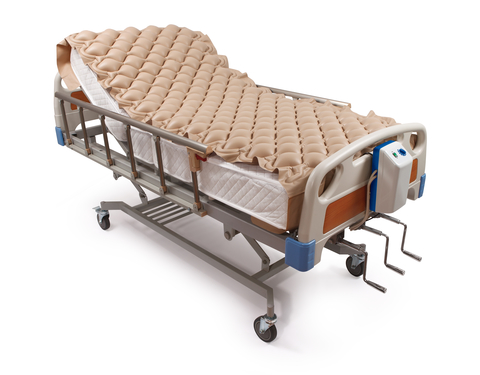
How do you address the subjectivity of medical device comfort?
Medical device comfort on a cold winter’s day
When you climb into bed at night and wrap yourself up in a nice warm blanket, you’re comfortable, right? What happens if it’s really hot and humid out and you’re trying to get some sleep… probably not so comfortable anymore!
Comfort is subjective. There are thousands and thousands of permutations in nearly any situation that can cause comfort or discomfort and any rating in between. These include mental, physical and temporal demands multiplied by your own performance, frustration and the amount of effort required.
What is comfort? The Oxford English dictionary defines it as “A state of physical ease and freedom from pain or constraint”. So even by this definition it is subjective. “Constraint” what is that? Is a t-shirt constraining, is a jacket constraining, is a hammock constraining, is a head brace constraining? The answer to all of these is yes.
Think of a dog putting on a coat for the first time. They shake and scratch and run like, well, mad dogs. But,after a short time they stop. And the next time you put the coat on them they’re fine. People are the same and what differentiates a t-shirt from a head brace in terms of comfort is your mental preparation for what’s about to happen. In medical devices this is very important to remember. If you think something is going to be 25kg of weight on your chest (Heavy) and its only 10kg will your brain tell you it’s comfortable?
So how do you decipher comfort when designing a medical device? The easiest way is to do this is a combination of irritate testing and asking exact questions. Start by getting a diverse population, if you are designing a head brace, insure that your test subjects fit into the 99th percentile and the 1st percentile and everywhere in between. The more subjects, the better. And having the same subjects for each of the formative and summative tests will give you more precise evaluation and better accuracy between the results.
Use the same scale with the same test subjects. Let’s say it’s 1 to 10, where 1 is unbearable and 10 is unnoticeable. This way, when you review your results you can get a more exact idea of what their scale is. For example if the scale is 1 to 10, one person might never give a score lower than 2 or higher than 7, while another might never go below 6 or higher than 9– even over the course of 20 or more tests. Deciphering each individual’s scale is important.
Ask exact questions. If you are testing for contact on the mouth, don’t say “Can you feel it on your mouth?” Ask “Can you feel it on the bottom left? Can you feel it on the bottom right, top left, top right?”, etc. This makes them think about the actual contact ,gives more precise results and opens up conversations and feedback that might otherwise be overlooked.
Making a patient prepared for a device is important. Explaining what it is, how it is expected to feel, expected pressures or required constraints prior to giving a medical device to the subject will significantly improve their initial comfort rating. If there is an analogous device, perhaps explain it in terms of that device.
How long will the patient be using the device? Just as comfort is subjective, so too is it dependent on the period of time it is required to be in use. Back to the “lying in your comfortable bed” analogy, lying in your bed is comfortable, but after a couple of days you may begin to feel uncomfortable. Designing the device to match the period of use is paramount. The more uncomfortable and awkward the device, the more important it is to understand where the discomfort is coming from and transfer that discomfort to another area. Ideally you would mitigate the discomfort entirely out of the device, but sometimes, particularly where weight and pressure are concerned, you just have to transfer the discomfort to another part of the device and the subject. If it only needs to be worn for 30 minutes, then it only needs to be comfortable for 30 minutes.
Finally, once you are happy with your level of comfort, what else can be done? Remember what the device function is. How will the device be perceived? Use materials, forms and colors that personify and reinforce a predetermined idea of comfort. Comfort is subjective, so if the patient believes it is comfortable it’s more likely to succeed.
Niall Redmond is a former StarFish Medical Industrial Designer. He brings 15 years of cross industry experience and a sense of humor to a wide variety of medical device projects.
Image: 25485302 © Halil I. Inci | Dreamstime.com